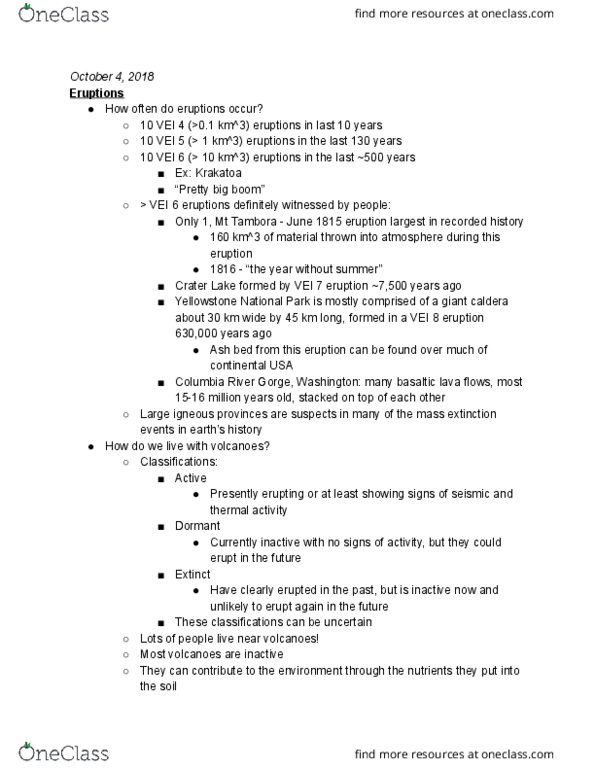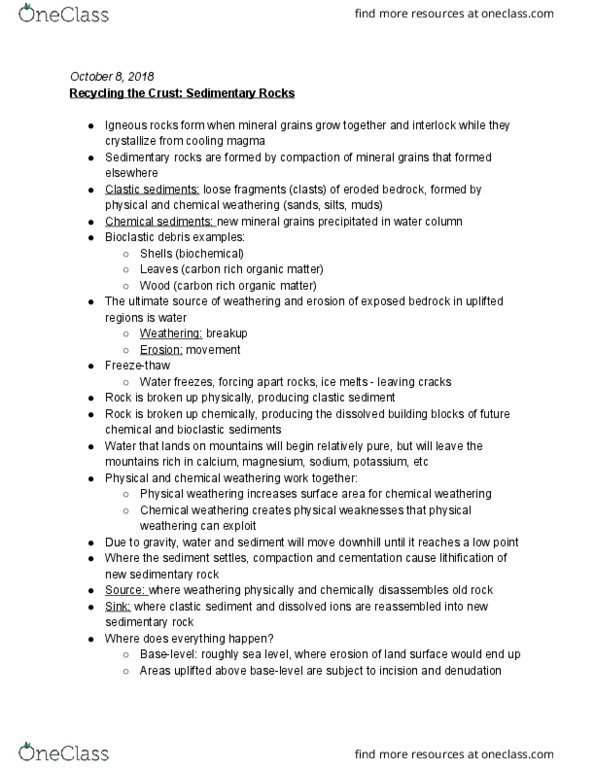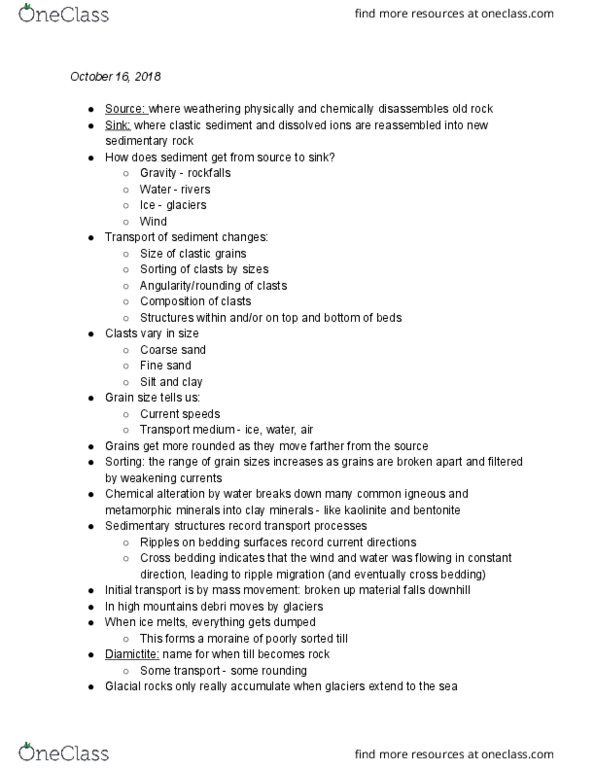GEOL 11040 Lecture Notes - Lecture 14: Clastic Rock, Denudation, Lithification
GEOL 11040 verified notes
14/31View all
Document Summary
Igneous rocks form when mineral grains grow together and interlock while they crystallize from cooling magma. Sedimentary rocks are formed by compaction of mineral grains that formed elsewhere. Clastic sediments: loose fragments (clasts) of eroded bedrock, formed by physical and chemical weathering (sands, silts, muds) Chemical sediments: new mineral grains precipitated in water column. The ultimate source of weathering and erosion of exposed bedrock in uplifted regions is water. Water freezes, forcing apart rocks, ice melts - leaving cracks. Rock is broken up physically, producing clastic sediment. Rock is broken up chemically, producing the dissolved building blocks of future chemical and bioclastic sediments. Water that lands on mountains will begin relatively pure, but will leave the mountains rich in calcium, magnesium, sodium, potassium, etc. Physical weathering increases surface area for chemical weathering. Chemical weathering creates physical weaknesses that physical weathering can exploit. Due to gravity, water and sediment will move downhill until it reaches a low point.




